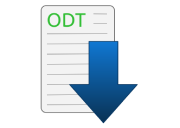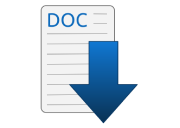Debt Settlement Hardship Letter Templates
Table of Contents
- Introduction
- Who Should Write a Debt Settlement Hardship Letter
- What a Debt Settlement Hardship Letter Should Contain
- Our Debt Settlement Hardship Letter Templates
- Job Loss or Reduction in Income Hardship Letter:
- Medical Hardship Letter:
- Divorce or Separation Hardship Letter:
- Death of a Spouse or Family Member Hardship Letter:
- Natural Disaster Hardship Letter:
- Going forward
Navigating Financial Hardship: Your Guide to Debt Settlement Hardship Letters
Introduction
In the face of financial hardship, it’s crucial to have the right tools at your disposal to navigate the storm. One such tool is a Debt Settlement Hardship Letter. This is a letter you write to your creditors explaining your current financial situation and proposing a manageable repayment plan based on your circumstances.
Debt Settlement Hardship Letters are a lifeline for those struggling to meet their financial obligations. They serve as a formal request for leniency and are often the first step towards negotiating a debt settlement that works for both parties.
Whether you’re dealing with job loss, medical expenses, or other unforeseen financial difficulties, a well-crafted Debt Settlement Hardship Letter can make a significant difference. It can pave the way towards reducing your debt, lowering your interest rates, or extending your repayment period.
In this guide, we’ll delve into the specifics of what a Debt Settlement Hardship Letter is, who should write one, and what it should contain. We’ll also provide you with various templates tailored to different types of hardship scenarios. These templates, available for download in both Odt and Doc formats, will serve as a starting point for crafting your own letter.
Remember, financial hardship is a challenge, not a life sentence. With the right approach and resources, you can regain control of your financial situation. Let’s get started.
Who Should Write a Debt Settlement Hardship Letter
A Debt Settlement Hardship Letter is not exclusive to any particular group of people. It’s a tool that can be utilized by anyone facing financial hardship that is making it difficult to meet their debt obligations.
Here are a few scenarios where writing a Debt Settlement Hardship Letter would be appropriate:
- Job Loss or Reduction in Income: If you’ve recently lost your job or experienced a significant decrease in your income, a Debt Settlement Hardship Letter can help you communicate this change to your creditors.
- Medical Emergencies: Unforeseen medical emergencies or long-term health issues can lead to substantial medical bills. If these costs are making it challenging to keep up with your debt payments, a hardship letter can be a step towards a solution.
- Divorce or Separation: The financial implications of a divorce or separation can be significant, often leading to difficulty in managing existing debts. A hardship letter can help you negotiate more manageable payment terms during this transition.
- Death of a Spouse or Family Member: If you’ve lost a spouse or family member who contributed to your household income, a Debt Settlement Hardship Letter can help you explain your new financial circumstances to your creditors.
- Natural Disasters: Events like floods, fires, or other natural disasters can lead to unexpected expenses and financial hardship. If such an event has affected your ability to pay your debts, a hardship letter can be beneficial.
Remember, the goal of a Debt Settlement Hardship Letter is to provide your creditors with a clear understanding of your current financial situation and to propose a feasible repayment plan. It’s about opening a line of communication and working towards a mutually beneficial agreement.
What a Debt Settlement Hardship Letter Should Contain
A Debt Settlement Hardship Letter is more than just a plea for help. It’s a strategic document that, when crafted correctly, can significantly improve your chances of reaching a favorable debt settlement agreement. Here are the key components your letter should contain:
- Your Personal Information: Start with your name, address, and account number. This helps the creditor identify your account quickly.
- Creditor’s Information: Include the name and address of the creditor or collection agency. This ensures your letter reaches the right party.
- Statement of Hardship: Clearly and concisely explain your current financial situation. Describe the specific event or circumstances that led to your financial hardship, whether it’s job loss, medical emergencies, divorce, death of a spouse, or a natural disaster.
- Evidence of Hardship: Where possible, provide evidence to support your claims. This could be unemployment checks, medical bills, divorce decrees, or any other relevant documents.
- Your Proposal: Outline your proposed solution. This could be a reduced payment plan, a request for lowered interest rates, or a plea for debt forgiveness. Be realistic about what you can afford.
- Good Faith Statement: Assure your creditor that you intend to pay your debts to the best of your ability. This shows your commitment to resolving the situation.
- Contact Information: Provide your phone number or email address for them to reach you. This encourages further communication.
- Closing Remarks: End the letter with a thank you to the creditor for their time and consideration. This leaves a positive impression.
Remember, honesty and clarity are key when writing a Debt Settlement Hardship Letter. Be transparent about your situation, but also be respectful and professional. Your goal is to convince your creditor that you’re committed to settling your debts and that the proposed plan is the best way forward given your circumstances.
Our Debt Settlement Hardship Letter Templates
While the core purpose of a Debt Settlement Hardship Letter remains the same, the specifics can vary based on the type of hardship you’re experiencing. Here are a few types of Debt Settlement Hardship Letter Templates tailored to different scenarios. In each case replace the text in square brackets with your information or delete if not relevant to your situation:
Job Loss or Reduction in Income Hardship Letter:
This type of letter is written when you’ve lost your job or your income has significantly decreased. It should detail the circumstances of your job loss or income reduction and how it has affected your ability to repay your debts.
Medical Hardship Letter:
This letter is used when unexpected medical expenses or long-term health issues have created financial hardship. It should include details about your medical situation and how it has impacted your financial stability.
Divorce or Separation Hardship Letter:
This letter is written when a divorce or separation has resulted in financial hardship. It should explain the financial implications of the divorce or separation and how they have affected your ability to manage your debts.
Death of a Spouse or Family Member Hardship Letter:
This letter is used when the death of a spouse or family member who contributed to your household income has led to financial hardship. It should detail the impact of the loss on your financial situation.
Natural Disaster Hardship Letter:
This letter is written when a natural disaster has led to unexpected expenses and financial hardship. It should explain the nature of the disaster and how it has affected your financial stability.
Each of these letters should still contain the key components outlined in the previous section, but the statement of hardship and evidence of hardship will be tailored to the specific situation. Remember, the goal is to provide a clear and honest picture of your financial hardship and to propose a realistic repayment plan.
Going forward
Navigating financial hardship can be a daunting task, but it’s important to remember that you’re not alone. Many people face similar challenges, and there are tools available to help you manage your situation. A Debt Settlement Hardship Letter is one such tool. It’s a powerful way to communicate with your creditors and work towards a solution that benefits both parties.
In this guide, we’ve explored what a Debt Settlement Hardship Letter is, who should write one, what it should contain, and the different types of letters tailored to various hardship scenarios. We hope this information empowers you to take control of your financial situation and start the journey towards debt relief.
Remember, the key to a successful Debt Settlement Hardship Letter is honesty, clarity, and a realistic proposal. Use our templates as a starting point, but make sure to personalize your letter to accurately reflect your situation.
Financial hardship is a challenge, but with the right approach and resources, it’s a challenge you can overcome. Take the first step today by downloading our templates and crafting your Debt Settlement Hardship Letter. Your journey towards financial relief starts here.

